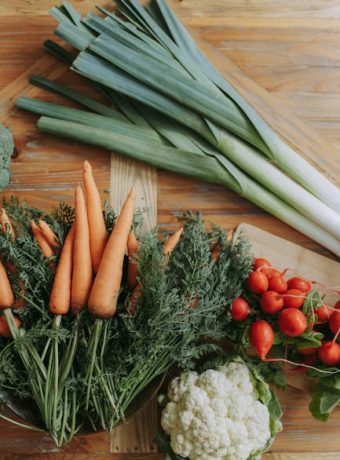Vegetables by Season: Fall Veggies for Stews 🍂
As the crisp air of fall rolls in, it’s time to cozy up with some hearty stews. Fall is the perfect season to incorporate a variety of vegetables into your cooking, adding both flavor and nutrition to your meals. Whether you’re a seasoned cook or a kitchen newbie, understanding which vegetables are in season can take your stew game to the next level. Let’s dive into the best fall veggies for stews, ensuring your dishes are as delicious as they are comforting!
Table of Contents
1. Why Choose Seasonal Veggies? 🤔
2. Top Fall Veggies for Stews 🥕
3. Tips for Making the Perfect Stew 🍲
4. Conclusion
5. FAQs
Why Choose Seasonal Veggies? 🤔
Choosing seasonal vegetables isn’t just a trendy culinary decision; it’s beneficial for several reasons:
1. Freshness and Flavor: Seasonal veggies are harvested at their peak, ensuring maximum flavor and nutrition.
2. Cost-Effective: When vegetables are in abundance, prices decrease, making them a budget-friendly choice.
3. Environmental Impact: Locally sourced, seasonal produce reduces the carbon footprint associated with transportation.
Top Fall Veggies for Stews 🥕
Here’s a list of must-have fall vegetables that can elevate your stews:
1. Carrots 🥕
Carrots provide a natural sweetness and vibrant color to your stew. They’re rich in beta-carotene, which supports eye health.
2. Butternut Squash 🎃
This sweet and nutty vegetable is perfect for adding a creamy texture to your stew. It’s packed with vitamins A and C.
3. Potatoes 🥔
Potatoes are a stew staple, offering heartiness and helping to thicken the broth. They’re also a good source of potassium.
4. Mushrooms 🍄
Mushrooms add an earthy flavor and meaty texture, making them a great option for vegetarian stews. They’re rich in antioxidants.
5. Kale 🥬
This leafy green is nutrient-dense and adds a pop of color and texture. Kale is known for its high vitamin K content.
Tips for Making the Perfect Stew 🍲
Creating the perfect stew is an art. Here are a few tips to ensure your fall vegetable stew is a hit:
1. Sauté Your Veggies: Start by sautéing your vegetables to enhance their flavors before adding them to the stew.
2. Use a Flavorful Broth: Whether you choose vegetable, chicken, or beef broth, ensure it’s well-seasoned to complement your veggies.
3. Low and Slow: Allow your stew to simmer on low heat. This slow cooking process helps the flavors meld together beautifully.
Conclusion
Embrace the fall season by indulging in hearty stews packed with seasonal vegetables. From the sweetness of carrots to the earthiness of mushrooms, each veggie brings something unique to the table. So, grab your favorite pot, gather your ingredients, and let the magic of fall flavors warm your home and heart.
FAQs
Q1: Can I freeze leftover stew?
A: Absolutely! Most stews freeze well. Just make sure to let it cool completely before transferring it to airtight containers.
Q2: What can I use to thicken my stew?
A: You can use flour, cornstarch, or even mashed potatoes to thicken your stew to your desired consistency.
Q3: How long should I cook my stew?
A: Ideally, stews should simmer for at least 1.5 to 2 hours to allow the flavors to fully develop.
Q4: Can I add meat to my fall vegetable stew?
A: Absolutely! Adding beef, chicken, or sausage can enhance the flavor and make it more filling.
Q5: Are there vegetarian alternatives to broth?
A: Yes, you can use vegetable broth or even water with some added herbs and spices for flavor.


